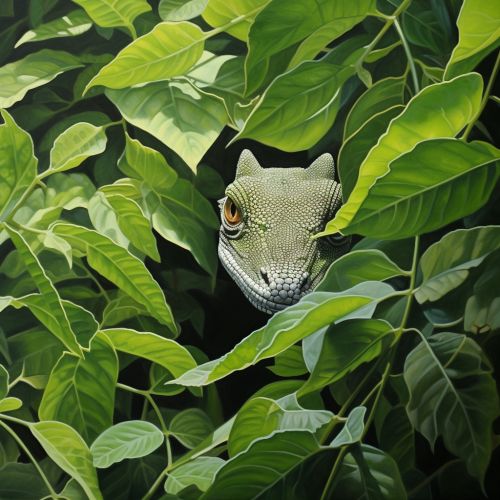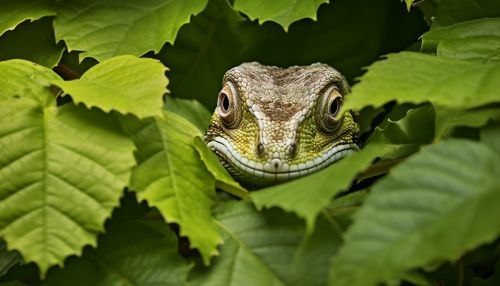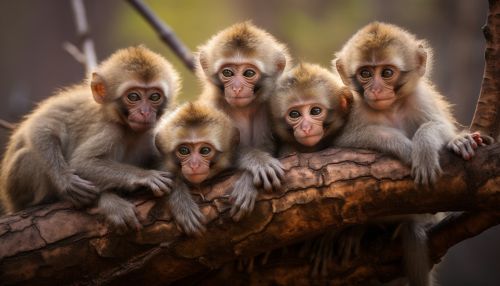The Biological Mechanisms of Animal Adaptation to Life in the Canopy
Introduction
The canopy layer of a forest is a complex and dynamic environment, home to a rich diversity of animal species. These animals have evolved a variety of biological adaptations to survive and thrive in this unique habitat. This article will delve into the intricate mechanisms of these adaptations, providing a comprehensive and detailed exploration of how animals adapt to life in the canopy.


Physical Adaptations
Physical adaptations are changes in an animal's physical structure that enhance its survival in a specific environment. In the case of canopy-dwelling animals, these adaptations are often related to locomotion, feeding, and protection from predators.
Locomotion
One of the most significant challenges for animals living in the canopy is moving around in this three-dimensional environment. Many canopy-dwelling animals have developed specialized structures for arboreal locomotion.


For instance, many primates, such as gibbons and spider monkeys, have long, flexible arms and strong, prehensile tails that allow them to swing from branch to branch in a form of locomotion known as brachiation. Similarly, many tree-dwelling rodents, like squirrels, have sharp claws and flexible ankles for climbing and jumping between trees.
Feeding
Feeding adaptations are also crucial for survival in the canopy. Many canopy-dwelling animals have evolved specialized feeding mechanisms to exploit the abundant resources available in this layer of the forest.


For example, many birds and mammals have developed strong, sharp beaks or teeth for piercing the tough skins of canopy fruits. Others, like the sloth, have slow metabolisms and specialized stomachs to digest leaves, a plentiful but nutritionally poor food source in the canopy.
Protection
Protection from predators is another key aspect of canopy life. Many canopy-dwelling animals have developed unique strategies for avoiding predation.


Camouflage is a common strategy, with many species evolving colors and patterns that blend in with the leaves and branches of the canopy. Other animals, like tree snakes and birds of prey, have developed excellent vision to spot potential threats from a distance.
Behavioral Adaptations
Behavioral adaptations are changes in an animal's behavior that enhance its survival. In the canopy, these adaptations often involve social behavior, reproduction, and communication.
Social Behavior
Many canopy-dwelling animals live in social groups, which can provide several advantages in this environment. For instance, group living can enhance foraging efficiency, provide protection from predators, and facilitate the care of offspring.


Primates, such as monkeys and apes, are well-known for their complex social structures. These animals often live in large groups with intricate hierarchies and roles, which can enhance their survival in the challenging canopy environment.
Reproduction
Reproductive adaptations are also crucial for the survival of canopy-dwelling species. Many of these animals have evolved unique reproductive strategies to ensure the survival of their offspring in this precarious habitat.


For example, many birds build nests in the high branches of the canopy, where they are safe from ground-dwelling predators. Other animals, like tree-dwelling marsupials, carry their young in pouches until they are capable of navigating the complex canopy environment.
Communication
Communication is another key aspect of canopy life. Many canopy-dwelling animals have developed sophisticated communication systems to coordinate group activities, warn of predators, and attract mates.


Birds, for instance, use a variety of vocalizations to communicate with each other in the dense canopy. Other animals, like primates, use a combination of vocalizations, body postures, and facial expressions to convey complex messages.
Conclusion
The canopy layer of a forest is a challenging environment, but the animals that inhabit it have evolved a remarkable array of adaptations to survive and thrive in this unique habitat. These adaptations, which involve changes in physical structures, behaviors, and even social systems, provide a fascinating glimpse into the power of evolution and the intricate interplay between organisms and their environment.
